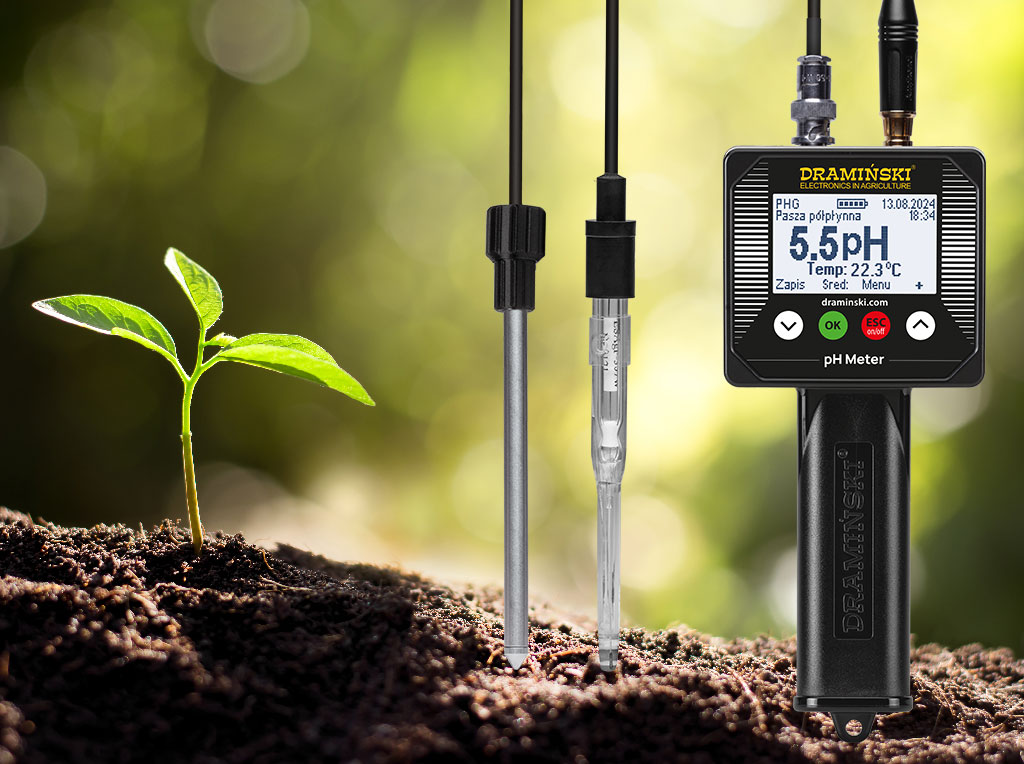Subsidies for farmers for soil liming

Encouraging Polish Farmers to Take Advantage of the Government Subsidy Program for Purchasing the PHG2 Product by Dramiński
Currently, we are observing a justified trend towards increased concern for soil protection. In Poland, acidic soils are predominant, necessitating deacidification measures. It’s essential to understand the needs thoroughly and create the possibility of financing activities related to liming. Therefore, the subsidy program for lime for 2024 was established to support Polish farmers.
How Does the 2024 Lime Subsidy Program Work?
The government lime subsidy program is part of a broader initiative aimed at environmental regeneration of soils and plays a crucial role in agriculture, especially in the context of changing climate conditions and the challenges they bring. The primary goal of the program is to deacidify soils with significantly low pH, which considerably reduces their fertility.
The program is funded by the National Fund for Environmental Protection and Water Management (NFOŚiGW) and individual Provincial Funds for Environmental Protection and Water Management (WFOŚiGW), demonstrating its importance and scale. The operational management of the program lies with these funds, which cooperate with the Regional Chemical and Agricultural Stations responsible for the technical aspects of implementing the program, such as soil pH testing and the distribution of liming agents.
The financing mechanism is based on subsidies for the purchase of agricultural lime necessary to neutralize soil acidity. The amount of subsidy depends on the size of the farm and the amount of pure deacidifying component that farmers plan to use. For small farms, up to 25 hectares, the support can amount to up to 300 PLN per ton. For larger farms, this amount is proportionally lower.
An essential aspect of the program is its availability to farms using soils with a pH equal to or lower than 5.5, indicating a high level of acidity. The program offers not only financial support but also expert assistance in the proper application of lime.
How to Obtain the Subsidy?
The process of obtaining the subsidy begins with submitting an application to the local Provincial Fund for Environmental Protection and Water Management (WFOŚiGW), which, along with the Regional Chemical and Agricultural Stations, is responsible for implementing the program.
Each application must be supported by appropriate documents, such as confirmation of the size of agricultural land and the right to manage the given land, as well as a soil pH analysis.
Meeting these requirements allows for the next stage, including the assessment of the application by the relevant authorities. After a positive verification, the farmer receives a decision on the allocation of funds, which are directly used for the purchase and spreading of lime.
The subsidy amounts vary and depend on the size of the farm and the amount of the purchased deacidifying component. These funds are intended to cover part of the costs associated with the purchase of agricultural lime, significantly reducing operational costs for the farmer.
Allocation of Funds for the 2024 Lime Subsidies
With the start of 2024, NFOŚiGW decided to reallocate funds between provinces to ensure an even distribution of funds, resulting from high demand and farmers’ engagement in the program.
When Will the 2024 Lime Subsidies Be Paid Out?
Due to the planned reallocation of funds and the necessary administrative procedures in the application assessment, the subsidies are planned to be paid out from September 30, 2024. The update in the deadline ensures the most thorough consideration of all applications to guarantee the most individualized approach. The allocated funds are intended for farmers who incurred costs related to soil liming before the end of October 2023.
Dramiński PHG2 – Modern Digital Soil and Fluid Acidity Meter
The second-generation Dramiński PHG2 digital soil and fluid (e.g., feed) acidity meter is a professional and essential tool in many industries. It allows for quick and accurate measurement of hydrogen ion concentration expressed in pH units. The device also enables the measurement of voltage (mV) and temperature (°C/°F). The new model, based on the 1996 device, features a large backlit display, self-update capability, multilingual menu, tool-free battery replacement and charge indicator, built-in memory, free data analysis software, and data cataloging capability.
Why Is Measuring Soil pH So Important?
Measuring soil pH is a crucial step in crop cultivation for several important reasons:
- Nutrient Absorption: The level of soil acidity affects the plants’ ability to absorb essential nutrients. Soils with inappropriate pH can prevent plants from taking up important nutrients, leading to reduced yields and crop quality.
- Soil Health: Proper pH is crucial for the microorganisms living in the soil, which influence its structure and health. Inappropriate pH can disrupt the development of microorganisms, affecting soil quality.
- Adjusting Farming Practices: Controlling soil acidity levels allows adjusting farming practices to the specific needs of crops. The optimal pH level varies depending on the plant species, so precise measurements enable effective soil management, leading to better financial outcomes.
The Dramiński PHG2 soil pH meter is a long-term investment that, thanks to its precise measurements and modern design, will help maintain healthy crops, optimally utilize resources, and support sustainable agriculture.
Don’t wait – the Dramiński PHG2 soil pH meter can be ordered online at www.draminski.pl or by phone at 89 675 26 00 or mobile 693 393 307.



